Small Businesses Now Ship Smarter Across 70+ Countries With UrShipper
We built a SaaS multi carrier shipping software with Shopify integration, enabling small scale businesses to compare Aramex, FedEx, DHL, and UPS rates instantly, automate fulfillment workflows, and manage shipments end-to-end, helping eCommerce brands scale faster with lower shipping costs.
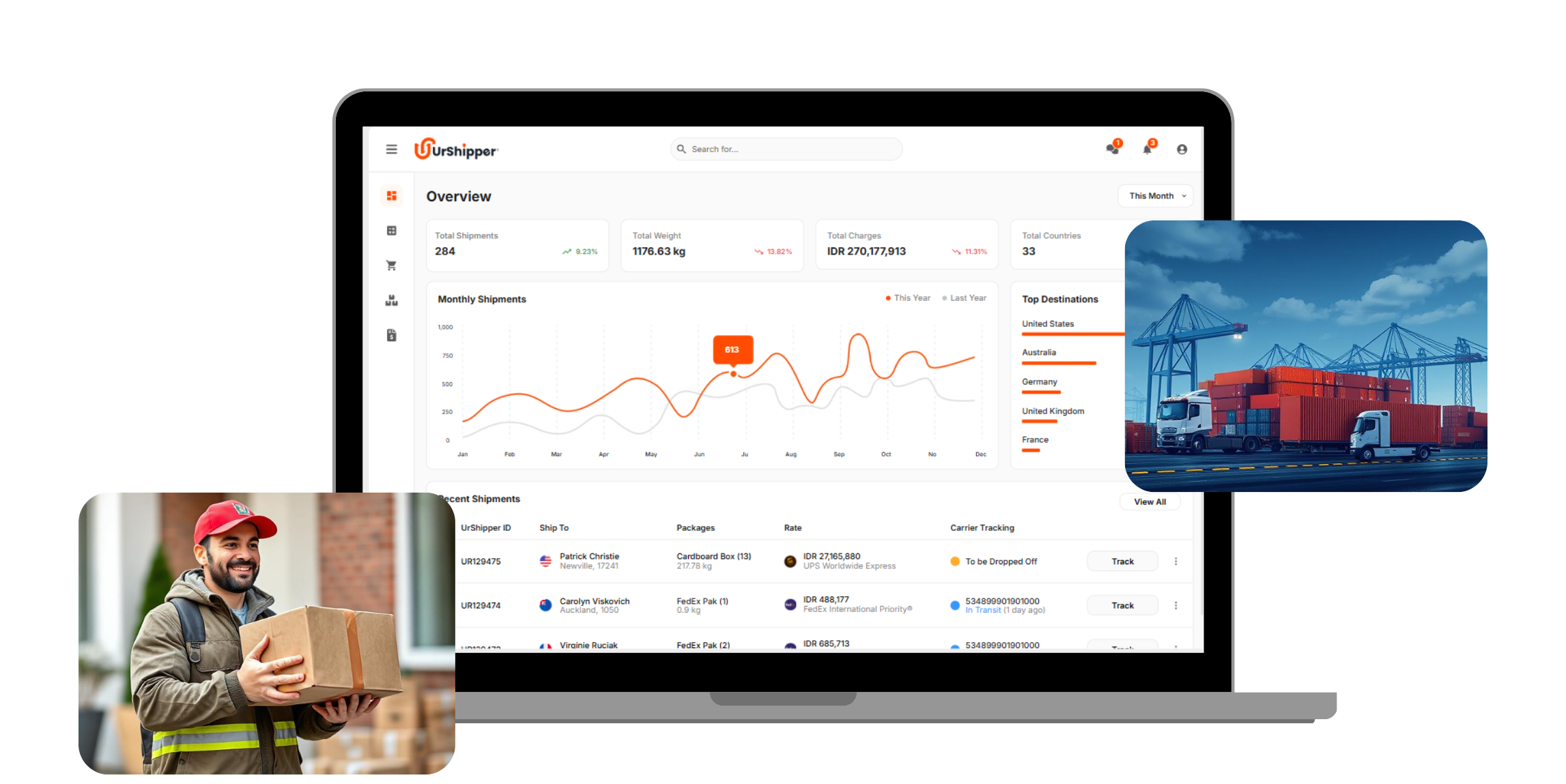
About Client and Key Challenges
UrShipper is the brainchild of an entrepreneur based in Bali, Indonesia, who knows the pain of international shipping firsthand. Back when he and his wife ran their own e-commerce brand, slow post offices, expensive couriers, and endless manual work were part of daily life.
Those headaches became the reason he built UrShipper, a multi-carrier shipping software designed to make global shipping faster, fairer, and less costly for small businesses like the one he owned.
Challenges before we stepped in:
The existing 3rd party SaaS platform was too basic to handle daily operations at scale.
Carrier integrations with FedEx, DHL, and UPS often failed, giving wrong rates or missing insurance details.
Customers, staff, and admins worked in silos, slowing down shipment processing.
Important updates like delays or tracking changes didn’t reach customers in time, leading to more calls and emails.
Clunky customer portal made shipment creation slow and lacked smooth Shopify integration.
Manual steps for grouping products, re-measuring, and generating labels for delayed dispatches.
In a market dominated by shipping giants like DHL and FedEx, these inefficiencies were eating into time, margins, and customer trust.
UrShipper needed a scalable, reliable multi-carrier shipping solution that could unify workflows, improve accuracy, and deliver a smoother experience for both merchants and internal teams.
Partnership Goal
The client wanted to create an aggregator platform for Shopify and eCommerce. The platform had to pull in rates from Aramex, FedEx, DHL, and UPS instantly, suggest the best option, and automate repetitive logistics tasks, aiming to stand among the best multi carrier shipping software solutions in the market.
Before reaching us, he had tried working with other vendors, but every attempt fell short. Some of the challenges with earlier vendors:
Unstable API Connections: API connections broke mid-way, disrupting carrier integrations.
Inaccurate Rates: Rates were often wrong or incomplete.
Insurance Sync Issues: Insurance details didn’t sync correctly.
Weak User Experience: The platform felt fragile, with a poor user experience for both customers and staff.
The vision was to rebuild UrShipper into a smarter shipping platform that could consolidate carrier options, ensure accurate rate calculation, and streamline operational workflows end-to-end.
Merchants could connect their Shopify stores or their own carrier accounts, while staff would have the tools to process, re-measure, re-label, and dispatch shipments without delays.
It needed to work for a single small order just as well as for hundreds of parcels in a day. And it had to scale fast, giving small businesses in Indonesia the same shipping power and visibility as big players, without the complexity or cost.
Before
- Carrier API failures meant bookings often had to be recalculated manually.
- No unified portal — customers, staff, and admins used separate tools.
- Shopify orders were imported manually, slowing fulfillment.
- Shipment updates and delay alerts were inconsistent.
- Staff re-measured parcels, grouped products, and created labels by hand.
- Tracking was limited, giving customers little visibility post-dispatch.
- Outdated UX made navigation slow for all user roles.
After
- Stable Aramex, FedEx, DHL, and UPS integrations with accurate rates and insurance.
- Unified portals for customers, staff, and admins.
- Shopify integration for automatic order imports.
- Automated shipment updates and delay alerts.
- Faster processing with automated measuring, grouping, and label generation.
- Real-time tracking with full status visibility.
- Modern, user-friendly UI for all roles.
Existing customers migrated to the new platform without service disruption
New business signups within the first two months of launch
Shipments processed successfully across 70+ countries in the first year
Existing customers migrated to the new platform without service disruption
New business signups within the first two months of launch
Team formation

We assembled a lean, cross-functional team to manage the entire development process, from product discovery to software development.
The backend team focused on carrier API integrations, database design, and server-side logic.
The frontend team developed the customer, staff, and admin portals using React and Next.js.
Quality assurance was handled by a dedicated QA team, running continuous tests to ensure every feature was reliable and accurate before release.
We followed Agile development practices, working in short sprints to deliver features in phases.
Asana was used for task management, and Slack for quick communication with both the client and our internal team.
Weekly check-ins and live demos kept progress transparent and ensured the product matched real operational workflows.

Behind UrShipper is a robust tech stack carefully chosen to ensure speed, scalability, and reliability for global shipping.
Our Partnership
Our work with UrShipper has been a multi-phase journey, each step building on the last to strengthen both the platform and the partnership. From day one, we worked closely with the client to align every technical decision with the operational reality of running a shipping aggregator in Indonesia.
On the technical side, the frontend was built with React and Ant Design, keeping the interface simple and scalable across customer, staff, and admin portals.
The backend was powered by Hasura and the AWS stack, giving the system the performance and flexibility it needed. A key addition was the use of Fluentd to push Hasura logs from Docker to AWS CloudWatch, ensuring better monitoring and observability.
In Phase 1, we focused on revamping the existing portal, improving UI, streamlining core workflows, and adding key features like Shopify integration and the option for customers to connect their own carrier accounts. This set the foundation for more advanced capabilities.
Phase 2 addressed edge cases and expanded services. We adapted the system to handle new carrier offerings, redesigned the dashboard for richer data insights, and overhauled invoice generation for better accuracy and compliance. The customer portal also received a major UI/UX upgrade.
We are now in Phase 2.5, preparing for the addition of a new shipping carrier, Aramex, and refining the multi-portal structure with separate interfaces for customers and admins. This phase also includes improvements to rate visibility, operational control, and scalability as the platform continues to grow.
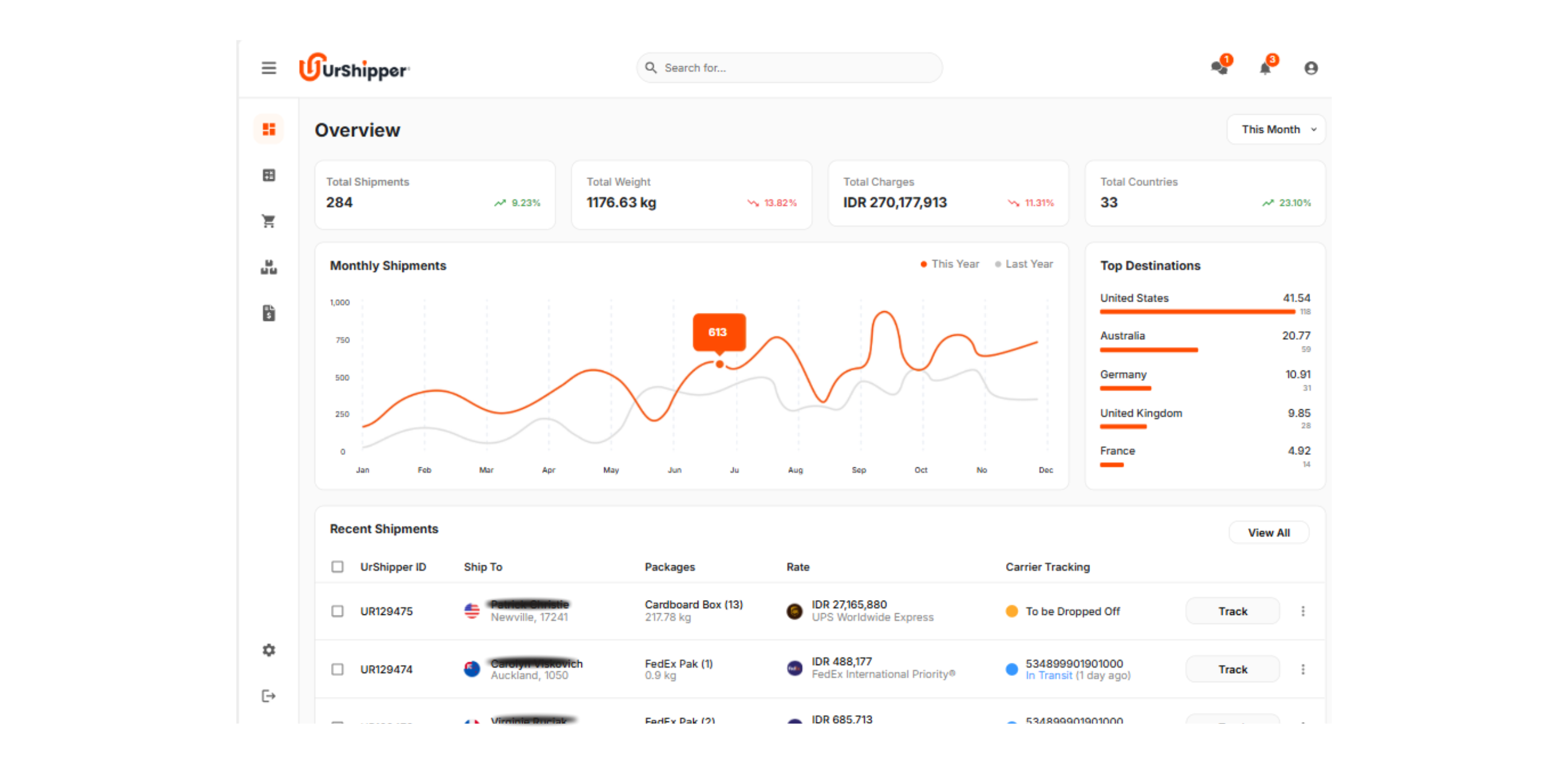
All-in-One Dashboard
All users can compare carrier rates, create labels, track packages, and manage invoices from a single interface.
The dashboard displays total shipments, spend, charges, countries served, top services, average delivery time, and monthly shipment trends.
Filters allow deeper analysis by carrier, service, or date range, giving complete control and transparency over all shipments.

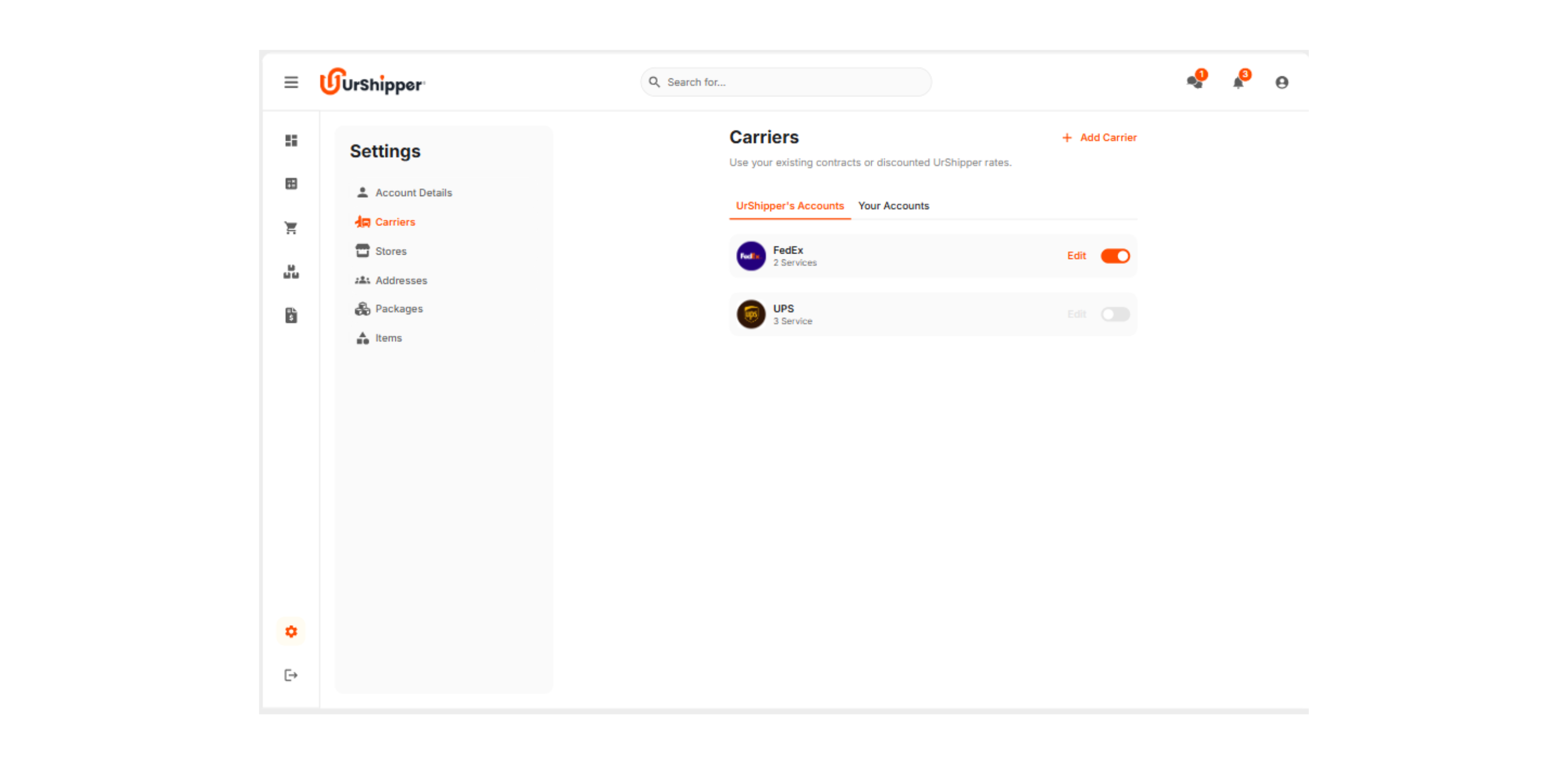
Multi-Carrier Shipping
Access discounted rates from FedEx, DHL, UPS, and soon Aramex, with the ability to connect personal carrier accounts.
The system compares rates across multiple providers, offers flexible delivery options, and shows a binding final price with no hidden costs.
A clear collective invoice consolidates charges from all carriers, making billing simpler and more transparent.

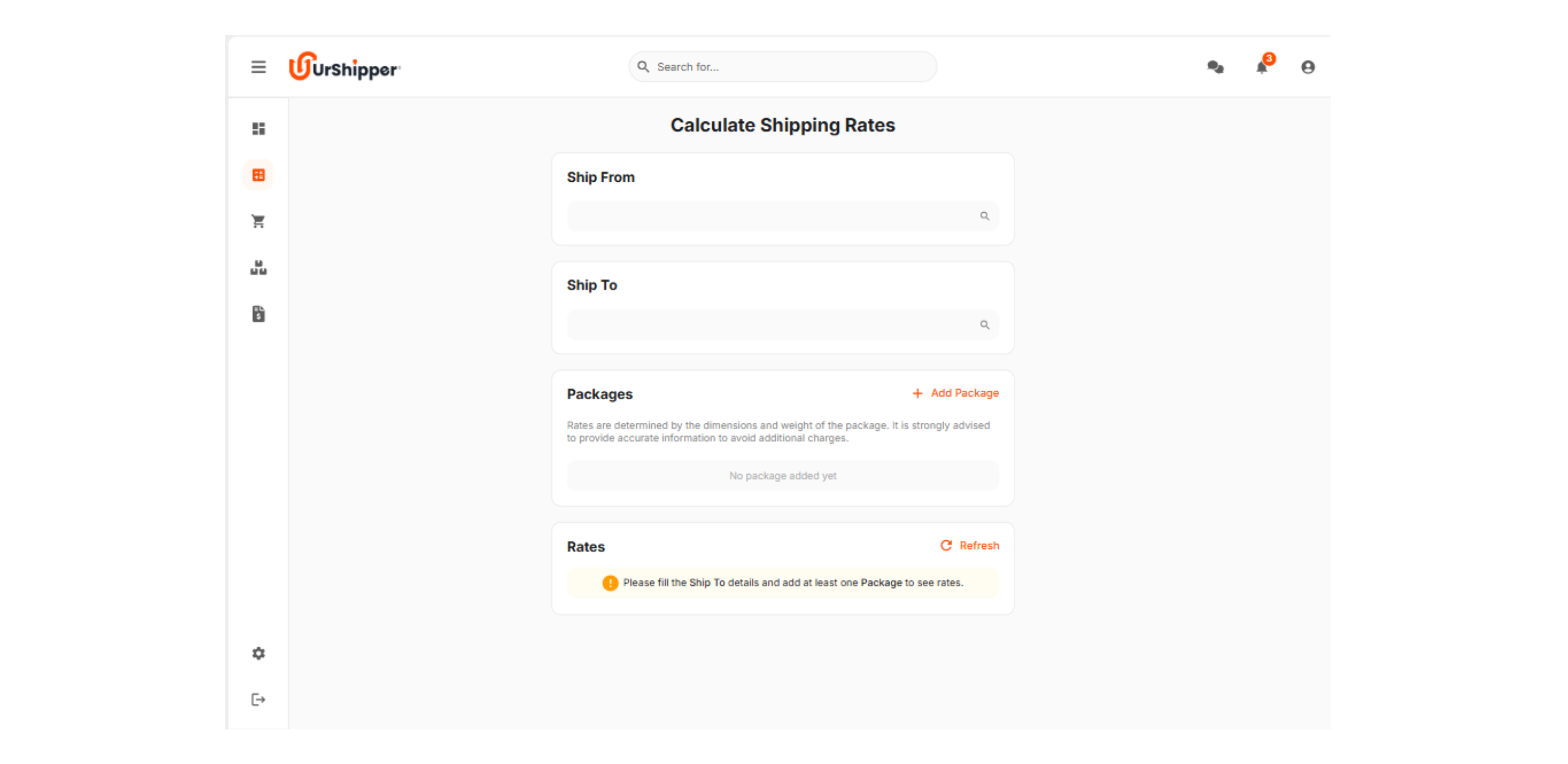
Faster Fulfilment & Automation
Merchants can connect their Shopify stores to automatically sync orders and tracking numbers.
Live checkout rates display based on the buyer’s address, and tracking numbers are auto-fulfilled once shipped.
Direct store sync eliminates the need for manual order entry, speeding up fulfilment.

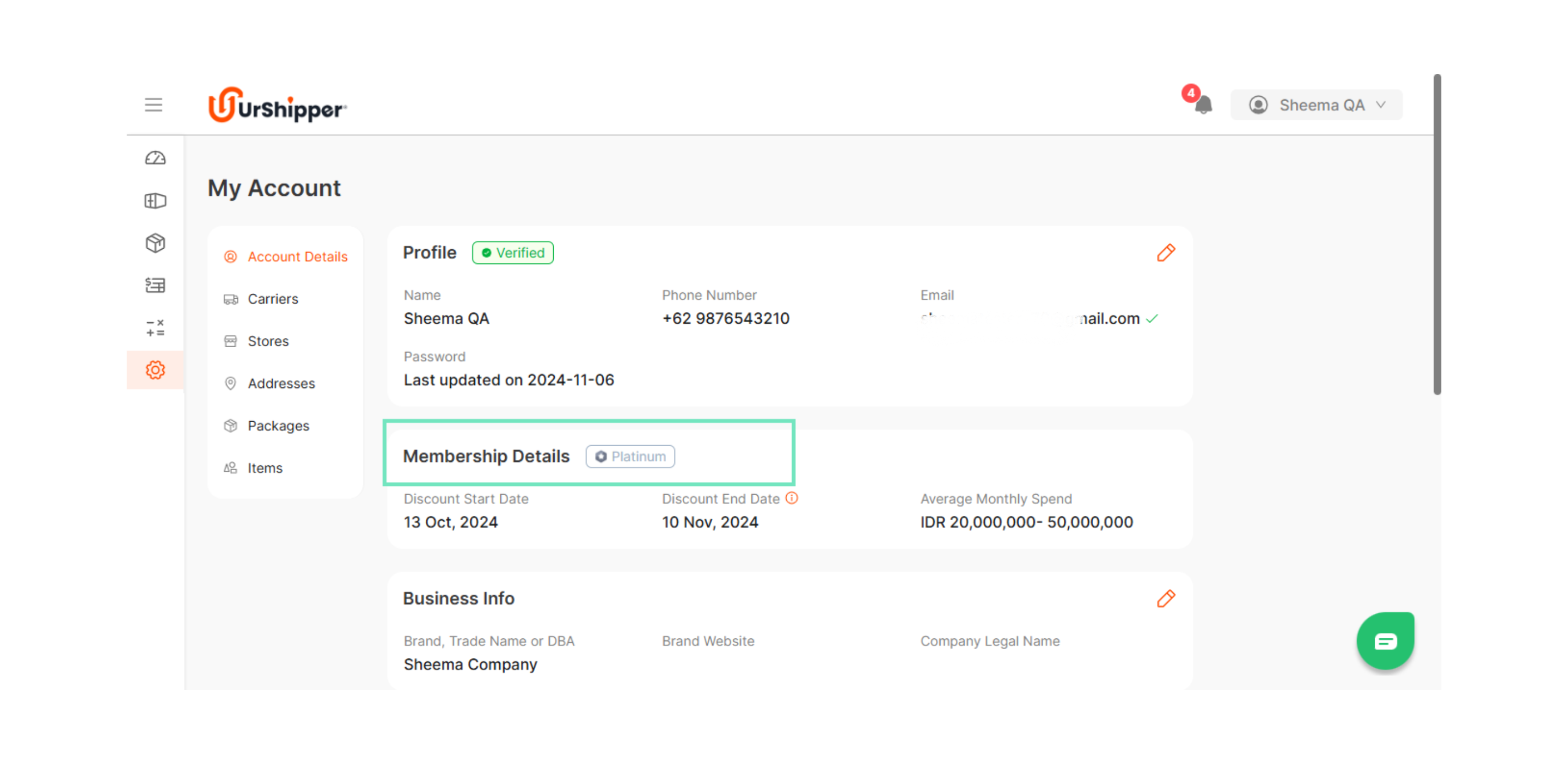
Tier-Based Discount Program
Shipping costs reduce as volume grows through a four-tier program. Users move up instantly when they hit a new spend threshold, with a 4-week grace period to maintain discounts if the target isn’t met.

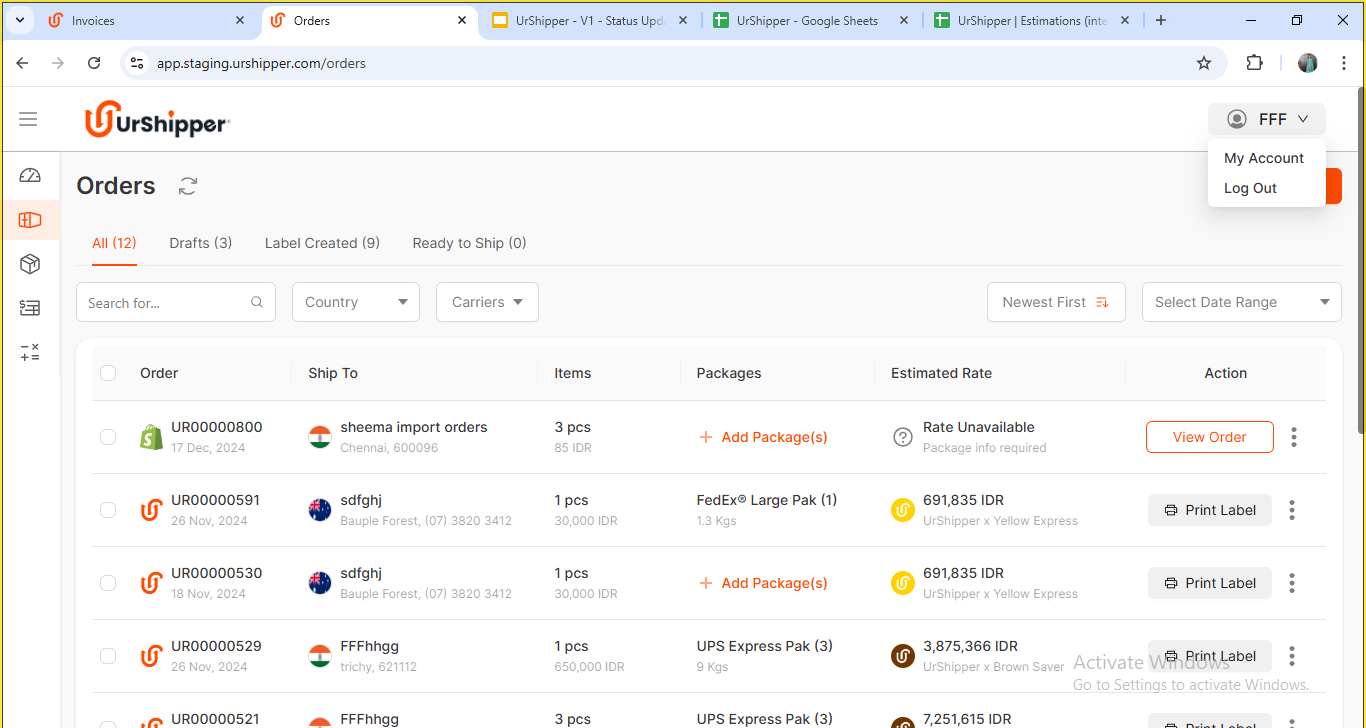
Customer Portal
Customers can sign up with personal, company, and billing details, followed by legal document verification.
They can connect UrShipper’s carrier accounts or link their own FedEx, DHL, or UPS accounts. Orders can be created manually or imported from Shopify, with options to edit, duplicate, or cancel (before label creation).
Shipments can be tracked in real time, filtered by multiple parameters, and scheduled for carrier pickup. Labels, packing slips, and invoices can be printed or downloaded at any time.

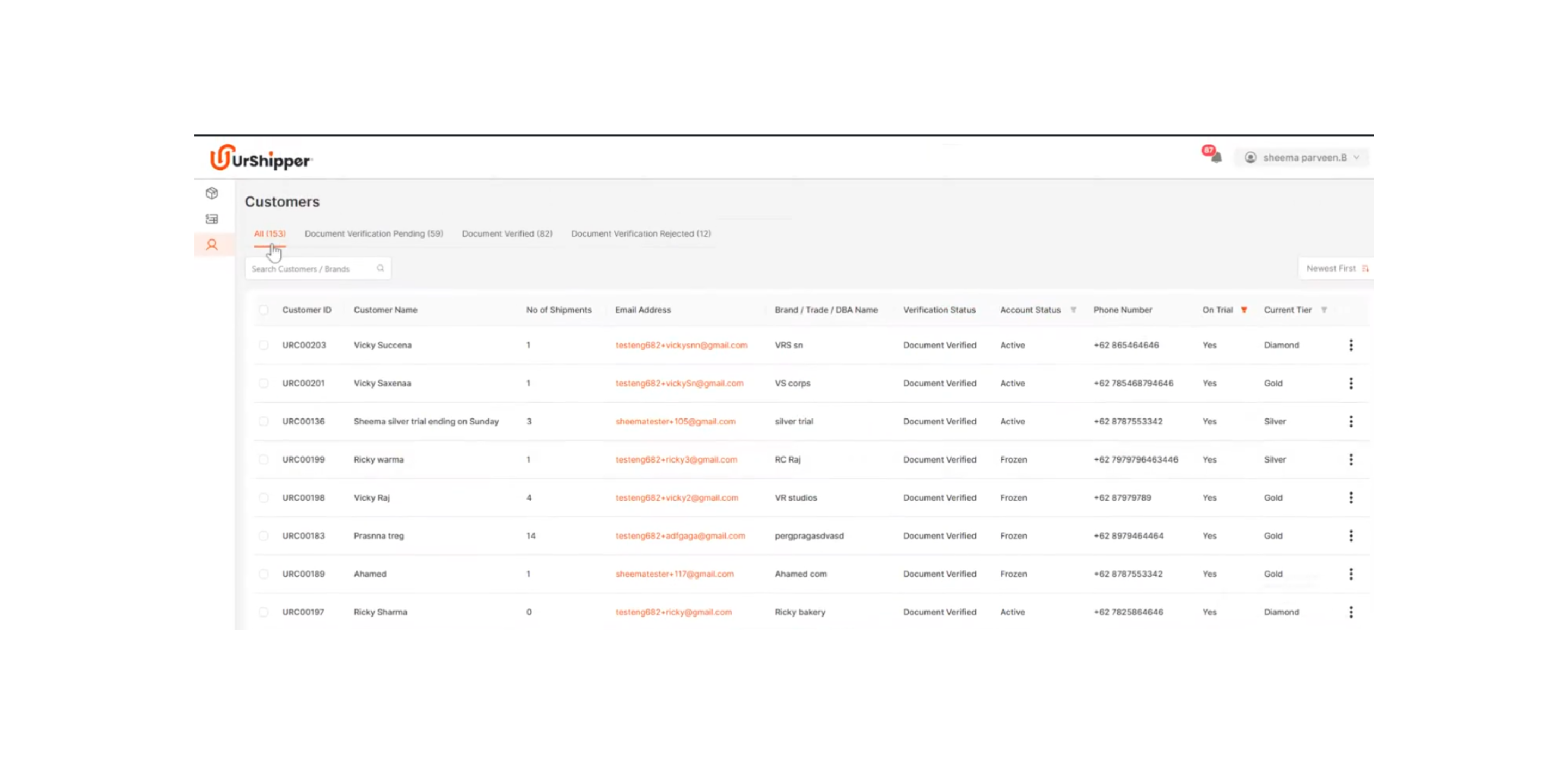
Staff Portal
Staff can search, filter, and edit shipments, set statuses (Ship, Hold, Cancel), and print labels or shipping documents in bulk.
They can upload external labels, manage invoices, and refresh payment statuses.
Staff also handle customer membership changes, approve or reject legal documents, and communicate directly through integrated live chat.

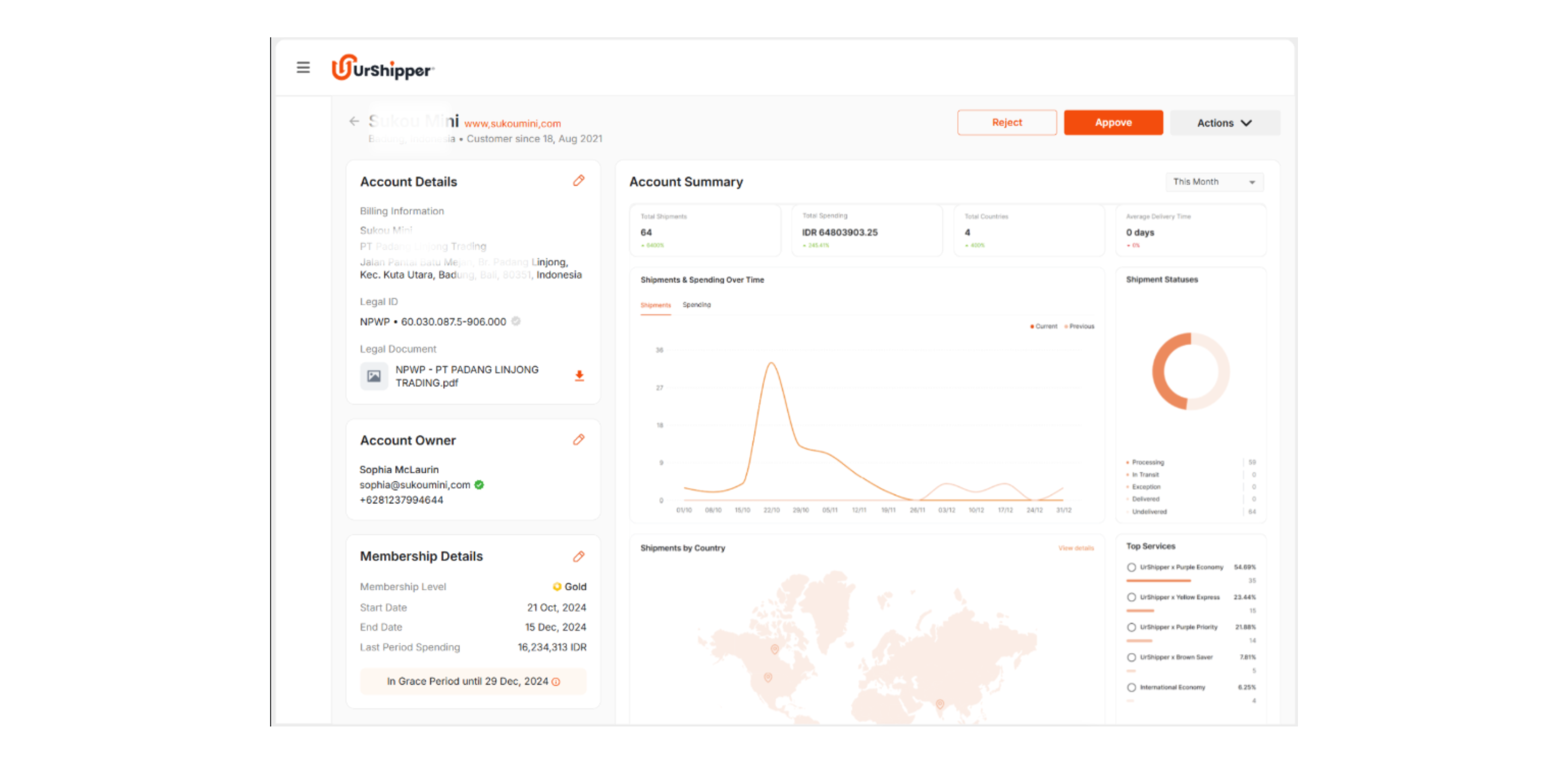
Super Admin Portal
Super admins have full shipment oversight with the ability to edit all details, change statuses, and perform bulk actions.
They can manage customers and staff, adjust membership tiers, enable trials, and change account statuses. Configuration tools allow admins to set carrier markups, update tier discounts, and manage billing thresholds.
Advanced dashboards provide detailed insights into revenue, shipments, top customers, destinations, and carrier performance, including average transit times and on-time delivery rates, helping make data-backed business decisions.


Human Support
Every user receives dedicated onboarding and ongoing support via live chat and email, ensuring smooth adoption and quick resolution of issues.

What Happened Next - Results
Within weeks of launch, existing customers were migrated smoothly to the new platform, around 200 accounts in total. The transition kept shipments running without interruption, thanks to phased onboarding and clear communication.
In just the first two months, 92 new businesses signed up, attracted by the faster workflows, transparent pricing, and multi-carrier options. The platform quickly became a trusted tool for small and mid-sized eCommerce sellers across Indonesia.
Over 2,000 shipments were successfully processed within the first year, reaching more than 70 countries. Real-time tracking, accurate rate calculations, and consolidated invoicing helped merchants save both time and money.
The improvements also positioned UrShipper for growth. With Aramex integration in progress and carrier performance metrics now visible, the client has the tools to expand operations, optimize delivery choices, and compete with global shipping giants on service quality and cost.







